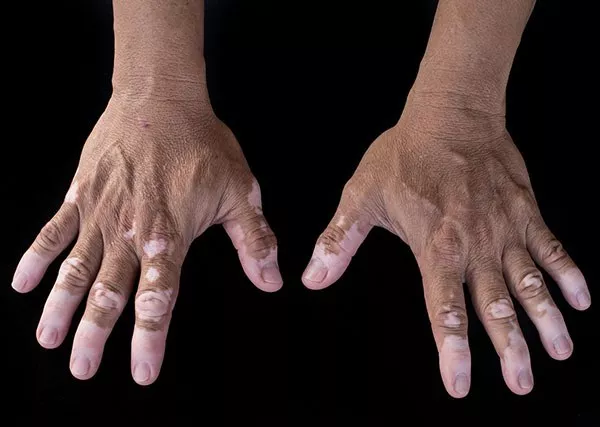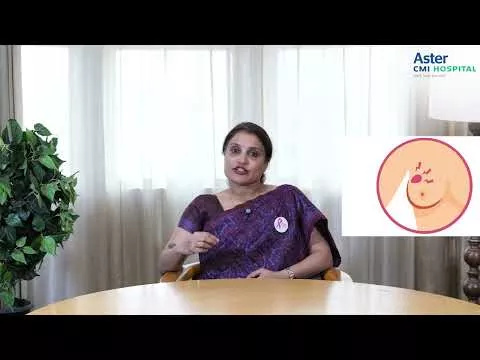Vitiligo is a disease in which the pigment cells of the skin (melanocytes) are destroyed in certain areas of the body. This leads to loss of skin color and formation of de-pigmented/ white on the skin. Vitiligo can be focal (localised to one area) or may affect several different areas on the body at the same. Though the exact cause of vitiligo is still unknown, most healthcare experts believe that it is an autoimmune condition in which the body’s immune system mistakenly attacks and destroys certain cells within the body itself. Vitiligo can also seen as a possible genetical condition, as it tends to run in families. It can also arise as a result of other medical conditions including thyroid dysfunction.
Most people with Vitiligo start developing symptoms before the age of 40; and almost half of them experience early symptoms by the age of 20.
Vitiligo is NOT contagious and does not spread through touch. It’s not painful and does not cause any other associated health complications. However, it can have major emotional and psychological impact on the person as it affects his/her physical appearance drastically. Though there is no definite cure, some medicines can manage this condition effectively. There is no known way to prevent vitiligo and it is also not possible to determine whether it will spread or remain confined to one location.
If you are experiencing symptoms of vitiligo, it is advisable to consult experienced dermatologists in Kochi Kerala who can provide the right diagnosis and suggest suitable treatment options based on your specific condition.
Treating Vitiligo
Though vitiligo cannot be cured, it can be treated efficiently and the person can lead a good quality life. The treatment plan will be decided after taking into consideration the number of patches and how much the patches have spread. Hence the treatment that suits one person may not suit the other. Besides, treating vitiligo is an extremely time-consuming process that comes with possible side effects.
Current treatment options for vitiligo include medical, surgical, and other treatments. Most treatments are aimed at restoring color to the white patches of skin
If you’re looking for comprehensive care, visiting a reputed dermatology hospital in Kochi Kerala can help you access advanced therapies, phototherapy options, and expert consultations under one roof.
Medical Treatments:
- Medicines (such as creams) to apply on the skin
- Medicines that need to be taken orally
- Phototherapy using Ultraviolet A or B rays
- A treatment that uses medicine plus ultraviolet A (UVA) light (PUVA)
Surgical Treatments
- Skin grafts from a person’s own tissues. The doctor takes skin from one area of a patient’s body and attaches it to another area. This treatment mode is suited for managing small patches.
- Tattooing small areas of skin.
Other Treatments
- Sunscreens
- Cosmetics, such as makeup or dye to cover the white patches
Overcoming The Depression
- A person affected by Vitiligo may require extensive psychological counselling as it can change his/her appearance drastically. The person should also be provided the emotional strength to live a normal life, face the society without any embarrassment and dismiss the stigma related to vitiligo, bravely.
- It is also important to have a doctor who not only knows how to treat vitiligo, but also provide emotional support by taking time out to listen and understand the affected person’s problem fully. The doctor should also be able to explain in detail the treatment choices and determine a treatment course that ensures the best possible outcomes.
- Joining Vitiligo support groups and speaking to others affected by this condition will go a long way.





